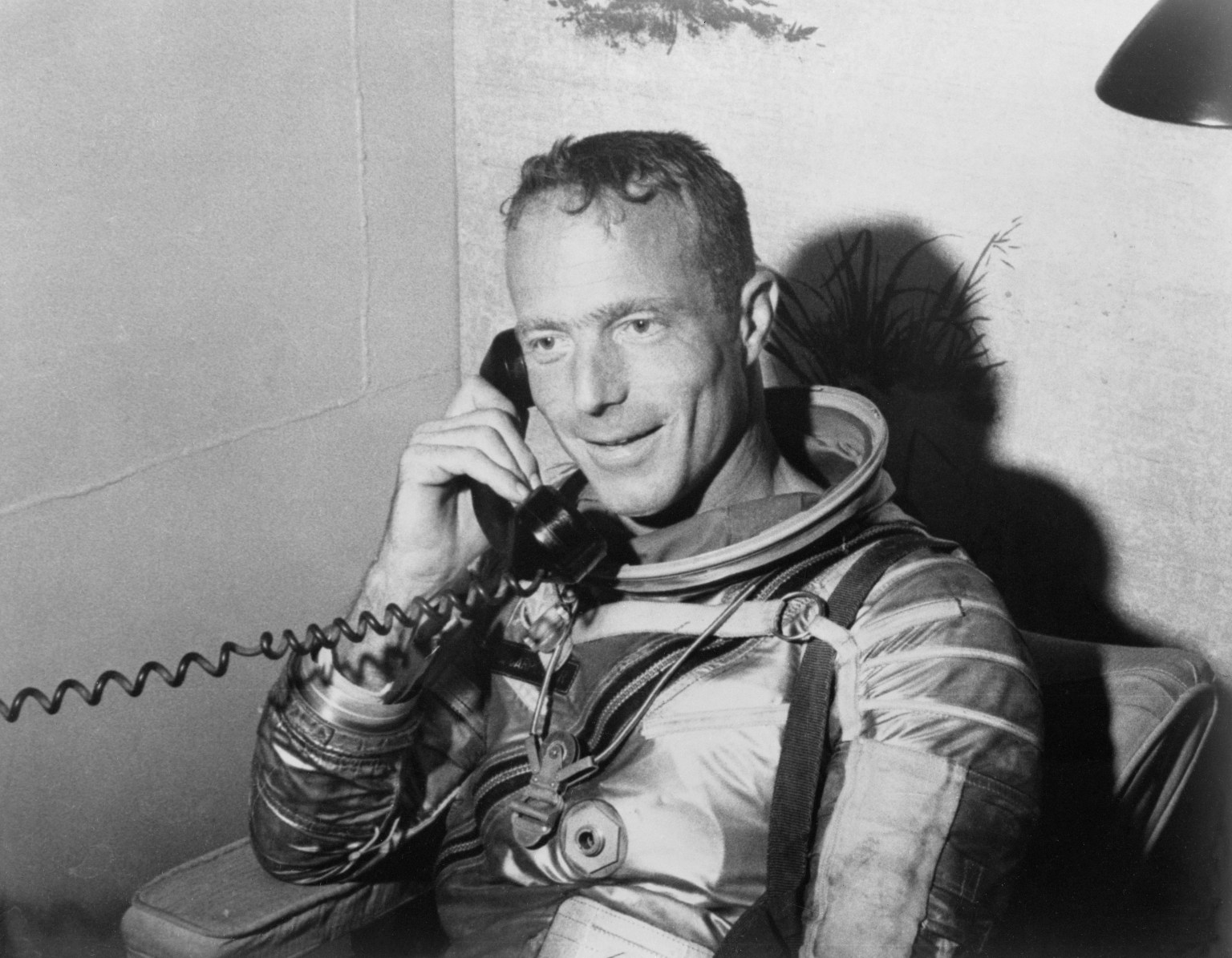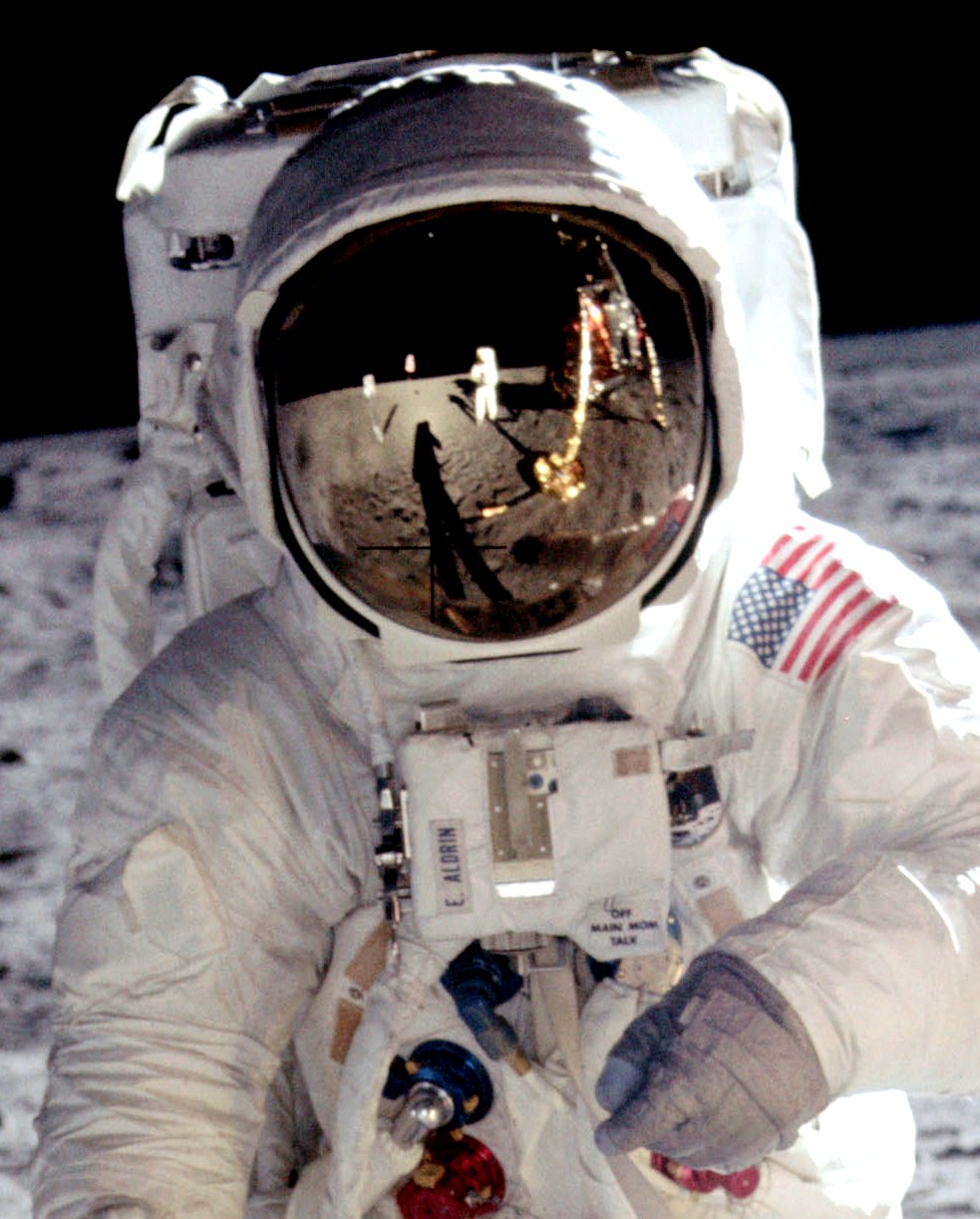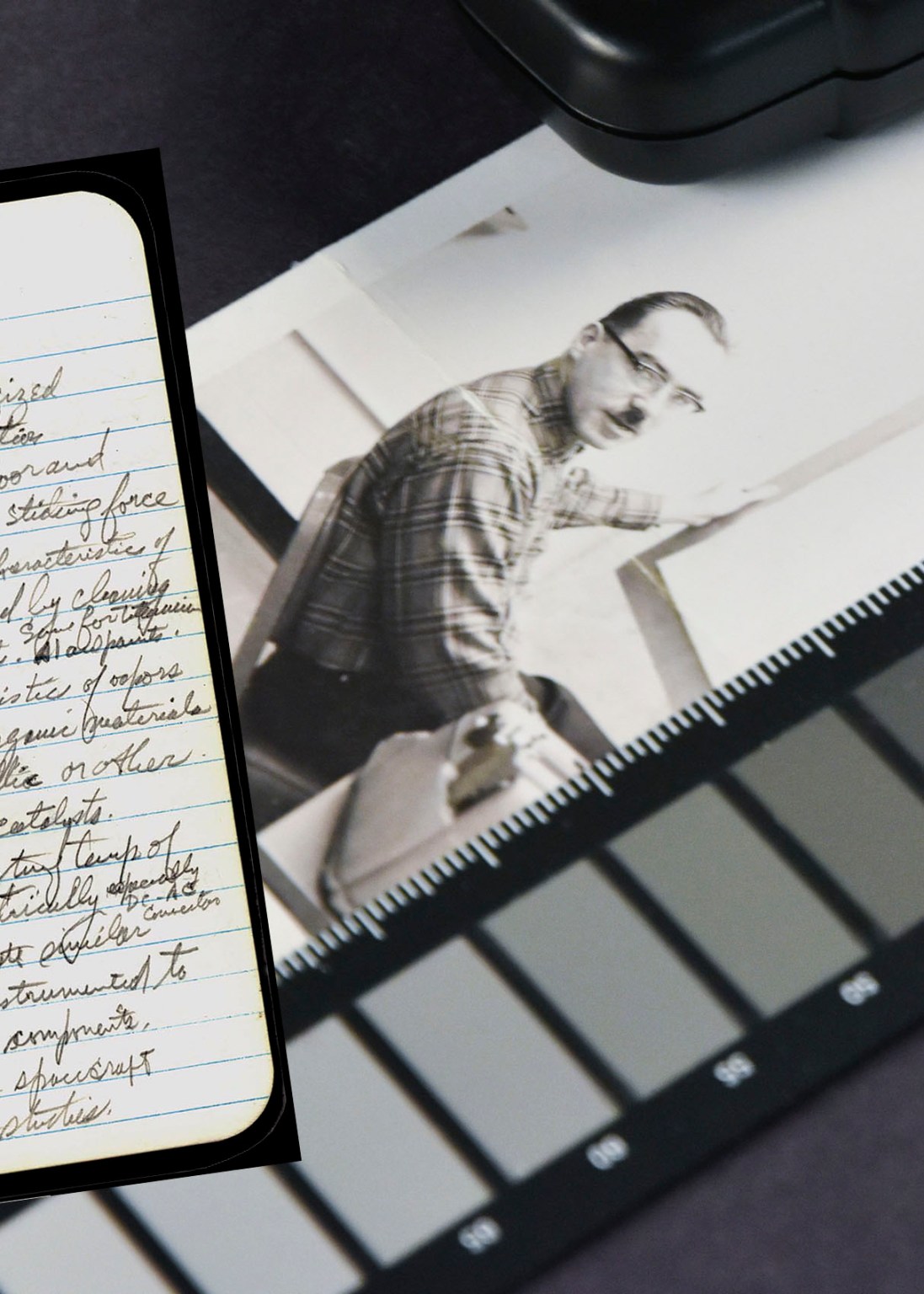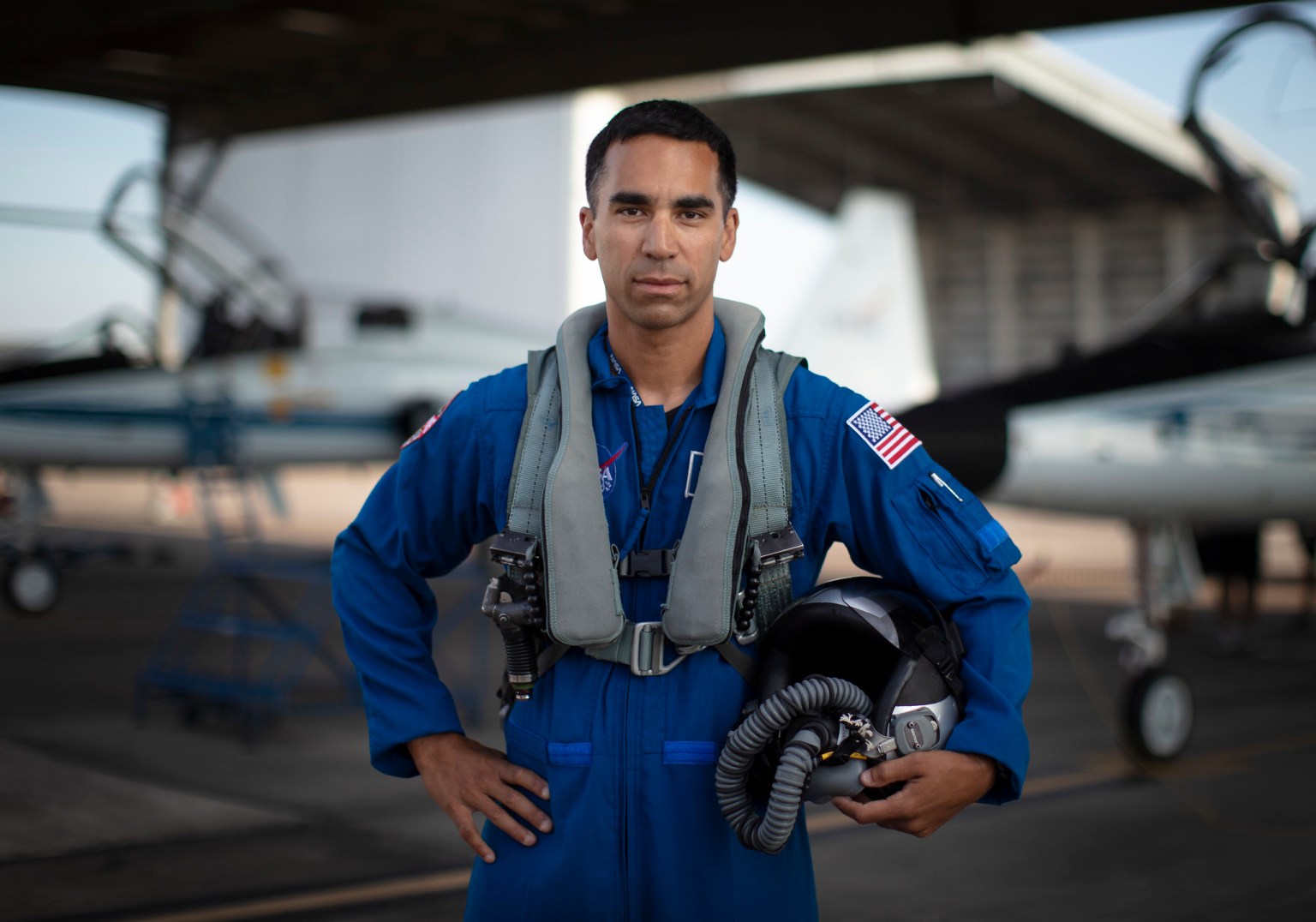Oral Histories
The Saturn Rockets
Presented here are the transcripts of several oral history interviews with project engineers and other personnel who worked on the Saturn rockets.
Dave Christensen
Dave Christensen served as a project engineer with the Army Ballistic Missile Agency (ABMA) in Huntsville, Alabama for four years following his time in Fort Bliss, Texas at the Guided Missile School, where he worked aircraft design, rocket operations, and missile operations. During his time with the ABMA, Christensen participated in the Redstone and Jupiter Programs. In his interview, Christensen discusses his decision to go into private industry rather than transfer to NASA, the program development process in industry, and time spent working on the Saturn H-1 engine as project engineer.
Interviewee: Dave Christensen
Interviewer: Steve Johnson
Date: Unknown, Circa 2008-2012
Location: Huntsville, Alabama
Parker Counts
Parker Counts, an engineering graduate of the University of Tennessee, worked at Marshall Space Flight Center from 1963 until 2003. After interviewing with the “wrong” Jim Lindsay, he took a job in Quality and Reliability Assurance as a test engineer, where his first job was to check for leaks of engine systems of the large F-1 engines of the Saturn V. Counts expresses the importance of hands-on testing, the success of the Saturn Program, and his views on leadership, both as a young engineer and as the External Tank project manager.
Interviewee: Parker Counts
Interviewer: Steve Johnson
Date: Unknown, Circa 2008-2012
Location: Huntsville, Alabama
Harry Craft
While an electrical engineering student at Auburn University, Harry Craft began his career in the space industry as an Army co-op in the late 1950s. In this interview, he recounts the first job during the Saturn days, his experience developing experiments for Skylab and Spacelab, and the incredible importance of testing and hands-on experience. Craft retired from Marshall in 1998.
Interviewee: Harry Craft
Interviewer: Steve Johnson
Date: Unknown, Circa 2008-2012
Location: Huntsville, Alabama
Ron Creel
Ron Creel began his career in the space industry as a mechanical engineering co-op student from Florida State University in 1965. His first project with NASA was working on the Lunar Roving Vehicle. In this interview, he describes the challenges associated with the design of the Lunar Rover for the Moon environment, weight issues and new technologies that were developed, recoverability of the Solid Rocket Boosters for shuttle, his reception of a Silver Snoopy Award, and the reward found in accomplishment. Mr. Creel retired from the Marshall Center in 1981.
Interviewee: Ron Creel
Interviewer: Steve Johnson
Date: Unknown, Circa 2008-2012
Location: Huntsville, Alabama
Richard Dailey
Richard Dailey graduated from Virginia Tech in 1953 with a degree in mechanical engineering with a specialization in thermodynamics and heat transfer. Dailey worked for the Astrionics Lab at IBM and was charged with making sure the electronics for the Saturn IB and Saturn V Instrument Unit were kept at the proper temperatures during flight. He discusses the use of cold plates in the Instrument Unit, the highlight of his career at IBM, and the satisfaction of being part of the Instrument Unit team, the team that put man on the Moon.
Interviewee: Richard Dailey
Interviewer: Steve Johnson
Date: Unknown, Circa 2008-2012
Location: Huntsville, Alabama
Eric Engler
A native of Germany, Eric Engler received a degree in electrical engineering in 1951. While working as a design engineer for an electrical company in, he became aware the U.S. Army was looking for engineers. He applied and in 1956, he came to Huntsville, Alabama for the Army Ballistic Missile Agency as a design engineer for guidance and control. His first job was developing the battery component for the Explorer I satellite. In this interview, Engler describes the preliminary design work for the Saturn V S-I stage, technical challenges with the Saturn V and shuttle, concurrent engineering, and the early uses of composite materials on space vehicles.
Interviewee: Eric Engler
Interviewer: Steve Johnson
Date: Unknown, Circa 2008-2012
Location: Huntsville, Alabama
Thomas Jack Lee
Jack Lee received a degree in electrical engineering from The University of Alabama in January 1958. That same year, he went to work for the Army Ballistic Missile Agency where his first job was to work modifications to Jupiter ground support equipment. Here, Lee discusses his work with the Pegasus Meteoroid Detection Satellite Project, his experience as Dr. Wernher von Braun’s technical assistant, and his promotion to deputy director of Marshall and his work with Spacelab. Lee served as the Marshall Center Director until January 1994.
Interviewee: Thomas Jack Lee
Interviewer: Steve Johnson
Date: Unknown, Circa 2008-2012
Location: Huntsville, Alabama
Alex McCool
Alex McCool received a bachelor of science and a master’s degree in mechanical engineering from Louisiana State University. Prior to a transfer to Redstone Arsenal in 1954, McCool was working on hydraulic dams with the Army Corps of Engineers. In this interview, he discusses his work sizing fuel tanks and fluid flow, the challenges associated with engine fluid dynamics, what putting the job first really meant, and his experiences working with engine contractors and other NASA field centers. McCool retired from the Marshall Center in 2004.
Interviewee: Alex McCool
Interviewer: Steve Johnson
Date: Unknown, Circa 2008-2012
Location: Huntsville, Alabama
Kenny Mitchell
Prior to his 1964 graduation from Auburn University with a degree in mechanical engineering, Kenny Mitchell began his career in the space industry as a co-op student with the Army Ballistic Missile Agency in 1959. Here, Mitchell explains the importance of “trust and verify” when it comes to testing, how total environment is determined for the S-I stage of the Saturn V and wheat new materials were developed to withstand the high temperatures, the application of futuristic science, and his work with environmental control systems for Mir, Skylab, shuttle, and the International Space Station.
Interviewee: Kenny Mitchell
Interviewer: Steve Johnson
Date: Unknown, Circa 2008-2012
Location: Huntsville, Alabama
Royce Mitchell
After graduating from Auburn University with a degree in aeronautical engineering, Royce Mitchell first worked in industry before coming to Huntsville and joining the Marshall Center in 1963. He describes the work he conducted on ignition systems for the Saturn V and the range safety system, spark plug challenges, exploding bridgewire units, and the decision to go “all-up” on the first flight of the Saturn V. Mitchell retired from Marshall in 1993.
Interviewee: Royce Mitchell
Interviewer: Steve Johnson
Date: Unknown, Circa 2008-2012
Location: Huntsville, Alabama
Brooks Moore
Brooks Moore received a bachelor of science degree in electrical engineering from Auburn University and continued his education with a master’s from Georgia Tech in 1949. He came to Huntsville, Alabama in 1952 to work with the Army Ballistic Missile Agency and transferred to Marshall Space Flight Center upon its founding in 1960. Here, he discusses his work in guidance and control for Saturn, digital computer use, development of automated ground equipment, and working with IBM. Moore retired from Marshall in 1981.
Interviewee: Brooks Moore
Interviewer: Steve Johnson
Date: Unknown, Circa 2008-2012
Location: Huntsville, Alabama
Saverio “Sonny” Morea
Following his graduation from the City College of New York, Sonny Morea worked in the missile program and was later assigned to Redstone Arsenal in Huntsville, Alabama to work guided missile development. Once out of the service, he requested to work in propulsion, which was granted. In this interview, he recounts the culture shock of moving to the South, his experiences as the F-1 Engine Program manager, the J-2 Engine Program manager, the Lunar Roving Vehicle Manager, and his move from program management work to more technical work. Morea retired from the Marshall Center in 1990.
Interviewee: Sonny Morea
Interviewer: Steve Johnson
Date: Unknown, Circa 2008-2012
Location: Huntsville, Alabama
George von Pragenau
A native of Austria, George von Pragenau was working with transistors when he received word that there were opportunities in the United States for engineers. He chose to come to Huntsville, Alabama because he had heard there was a team of Germans, and they spoke German in Austria as well. He came to the Army Ballistic Missile Agency in 1957 and transferred to NASA with the creation of the Marshall Space Flight Center in 1960. In this interview, he describes his work with electric circuitry development, the pogo problem, the importance of Generals John Medaris and Holger Toftoy on the U.S. space program, and the organizational changes that occurred at Marshall and the whole of NASA. Von Pragenau retired from the Marshall Center in 1991.
Interviewee: George von Pragenau
Interviewer: Steve Johnson
Date: Unknown, Circa 2008-2012
Location: Huntsville, Alabama
Jack Stokes
Jack Stokes came to the Marshall Center in 1967 after receiving a degree in psychology with a minor in aeronautical engineering from North Carolina State University. His first task at Marshall was to write crew procedures for Skylab. Here, he explains learning to think in terms of microgravity, the importance of planning motions, the complications of developing space-related tools, his work with Skylab and International Space Station procedures, and what it is like working as both NASA and contractor personnel. Stokes retired from the Marshall Center in 2005.
Interviewee: Jack Stokes
Interviewer: Steve Johnson
Date: Unknown, Circa 2008-2012
Location: Huntsville, Alabama
Gary Sweet
Gary Sweet worked for United Space Boosters, Inc (USBI) as a chemical engineer. During his time with the company, he worked on both the Saturn and Space Shuttle Programs. In this interview, Sweet discusses his work performing configuration control during the Saturn Program, making sure all parts from various manufacturers fit together, and his work in robotics that lead to working thermal ablative coating on the outside of the shuttle Solid Rocket Boosters.
Interviewee: Gary Sweet
Interviewer: Steve Johnson
Date: Unknown, Circa 2008-2012
Location: Huntsville, Alabama
Luke Talley
After receiving a degree in electrical engineering from The University of Alabama, Luke Talley joined IBM. From 1967 to 1975, he worked as a contractor for NASA on the Saturn and Skylab Programs. Here, Talley describes the nature of his work on the Instrument Unit for the Saturn V, his experience as a NASA contractor, the importance of testing, and what the work environment and pace of work were like during the Saturn days.
Interviewee: Luke Talley
Interviewer: Steve Johnson
Date: Unknown, Circa 2008-2012
Location: Huntsville, Alabama
Ron Tepool
Ron Tepool first came to the Marshall Space Flight Center in 1963 as a mechanical engineering co-op student in the Test Lab. His first job was testing the F-1 engines for the Saturn V launch vehicle. In this interview, he recounts the first test he was in charge of running, the new tools and ways of testing that were created, and the elements of testing. Tepool retired from Marshall in 2012.
Interviewee: Ron Tepool
Interviewer: Steve Johnson
Date: Unknown, Circa 2008-2012
Location: Huntsville, Alabama
Otha “Skeet” Vaughan
In 1956, after receiving a degree in mechanical engineering from Clemson A&M University and completing a tour of duty with the Air Force, Skeet Vaughan came to the Army Ballistic Missile Agency on Redstone Arsenal. He followed the transfer to NASA Marshall in 1960 and worked in the Astrophysics Group in the Aeroballistic Division putting together environmental criteria documents for spacecraft design. Here, he explains his work creating lunar operations criteria documents for the lunar landing program, trafficability on the lunar surface by the Lunar Roving Vehicle, and the challenges in designing, and later conducting, experiments. Vaughan retired from the Marshall Center in 1999.
Interviewee: Skeet Vaughan
Interviewer: Steve Johnson
Date: Unknown, Circa 2008-2012
Location: Huntsville, Alabama
Armis Lenall “Len” Worlund
After receiving a bachelor and master’s degree from Auburn University in mechanical engineering, Len Worlund worked for a very brief time at the Chrysler Corporation before joining Marshall in 1961 to work heat flow for the Saturn Program. In this interview, he describes his work in heat flow and maintaining pressure in the fuel tanks, how his work with Saturn set him up for work on the space shuttle, and what it was like creating a technology testbed at Marshall. Worlund retired from the Marshall Center in 2003.
Interviewee: Len Worlund
Interviewer: Steve Johnson
Date: Unknown, Circa 2008-2012
Location: Huntsville, Alabama






























